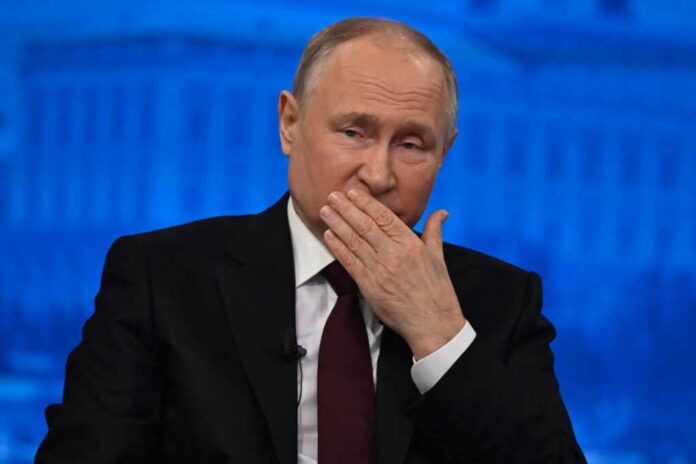
The United States and Ukraine have established a new investment fund to rebuild Ukraine’s economy while securing critical minerals for American industries, but implementation faces challenges amid ongoing Russian occupation of resource-rich regions.
At a Glance
- The US-Ukraine Reconstruction Investment Fund creates a partnership where Ukraine maintains full ownership of its resources while the US gains preferential access to critical minerals
- Ukraine will contribute 50% of revenues from new mineral, oil, and gas projects, while US military aid counts as America’s capital contribution
- The US International Development Finance Corporation (DFC) will serve as the American partner with rights to negotiate market-based offtake agreements
- The deal faces significant implementation challenges including outdated geological surveys and Russian occupation of mineral-rich eastern regions
Partnership Framework Preserves Ukrainian Sovereignty
The United States and Ukraine formally signed an agreement on April 30, 2023, establishing the framework for the United States-Ukraine Reconstruction Investment Fund. Unlike earlier proposals, this final agreement preserves complete Ukrainian ownership of its natural resources and infrastructure, addressing previous concerns about foreign exploitation.
The partnership designates the US International Development Finance Corporation (DFC) as America’s representative, working alongside Ukraine’s State Organization Agency on Support of Public-Private Partnership.
The agreement creates a collaborative investment vehicle rather than a direct mineral acquisition program. This distinction proves crucial for Ukrainian sovereignty while still providing America with preferential negotiating rights for critical minerals.
The partnership will focus on investments in natural resource development and infrastructure reconstruction projects that benefit both nations, emphasizing security and economic growth.
More on Ukraine deal, per senior Treasury official:
•From start to finish, this agreement is a fully collaborative partnership between our nations, that both the United States and Ukraine will benefit from.
◦This partnership represents the United States taking an economic…— Jacqui Heinrich (@JacquiHeinrich) May 1, 2025
Financial Structure and Resource Allocation
The fund establishes a unique financial structure where Ukraine will contribute 50% of revenues from new mineral, oil, and gas projects to the partnership. Importantly, existing Ukrainian energy operations like Naftogaz and Ukrnafta are excluded from this arrangement. The American contribution comes through an innovative mechanism where US military assistance to Ukraine counts as America’s capital contribution, with future military aid increasing the US stake in the partnership.
A significant component of the deal is that Ukraine will not be required to repay past military aid, a major financial concession that recognizes Ukraine’s economic challenges while under Russian attack. Though the agreement does not specify the initial capitalization amount for the partnership, it creates a framework for ongoing investment tied to both resource revenues and defense support. Financial details will be further clarified when the limited partnership agreement is finalized.
Ukraine and the United States have signed an Economic Partnership Agreement to establish the Reconstruction Investment Fund – an instrument for mobilizing investment into Ukraine’s economic development and advancing the Ukraine-U.S. strategic partnership.
The Agreement was… https://t.co/O060FhPMwM pic.twitter.com/4pe6LYQpL0
— Anton Gerashchenko (@Gerashchenko_en) May 1, 2025
Access to Critical Minerals and Infrastructure
The agreement grants the DFC preferential rights to negotiate offtake arrangements for critical minerals projects in Ukraine. This does not provide direct American access to Ukrainian resources but creates a competitive advantage in securing supply chains for minerals essential to advanced manufacturing, defense, and renewable energy. Ukrainian authorities must include specific information provisions in resource licenses and permits to facilitate partnership participation.
The extensive list of minerals covered by the agreement encompasses virtually all strategically important elements for advanced technology and energy production. While the DFC can negotiate market-based offtake rights, the agreement prohibits Ukraine from offering more favorable terms to third parties, protecting American interests while maintaining market competition. This framework aims to secure reliable supply chains without imposing exploitative terms.
Implementation Challenges and Strategic Impact
Despite the agreement’s ambitious scope, significant obstacles remain for effective implementation. Many of Ukraine’s resource-rich regions in the east are currently under Russian occupation, limiting immediate development potential. Additionally, Ukraine’s geological surveys are largely outdated, with many dating back to the Soviet era, necessitating comprehensive remapping and exploration efforts. The country’s energy infrastructure has also suffered extensive damage from Russian attacks.
While the agreement lacks explicit security guarantees for Ukraine, it represents what President Zelensky described as “long-term strategic alignment” between the nations. The deal may serve as a model for similar resource partnerships with other nations, potentially expanding American access to critical minerals globally. For Ukraine, beyond the immediate economic benefits, the partnership provides another avenue of American engagement that strengthens Ukraine’s position against Russian aggression through economic development and strategic alignment.

























